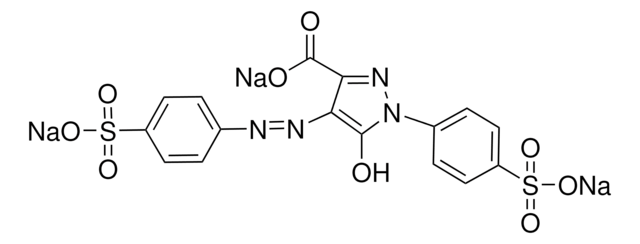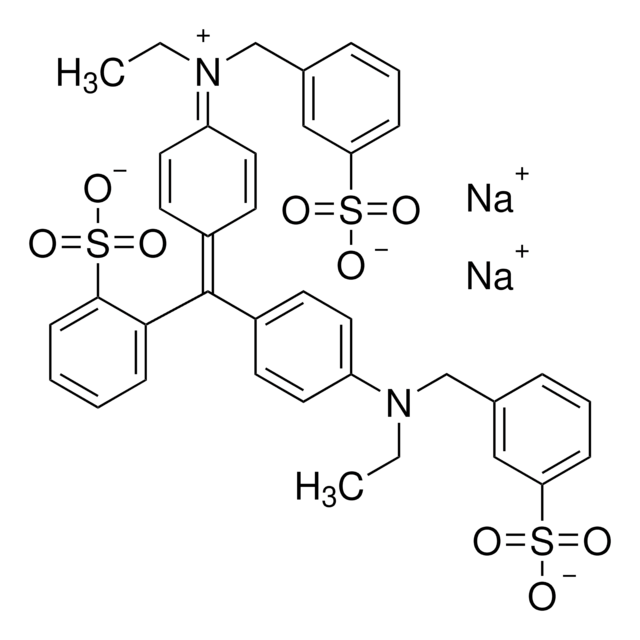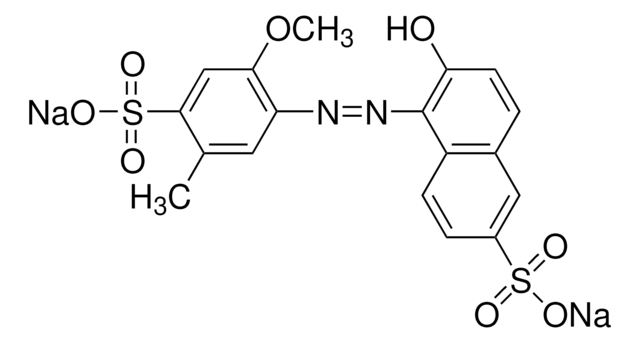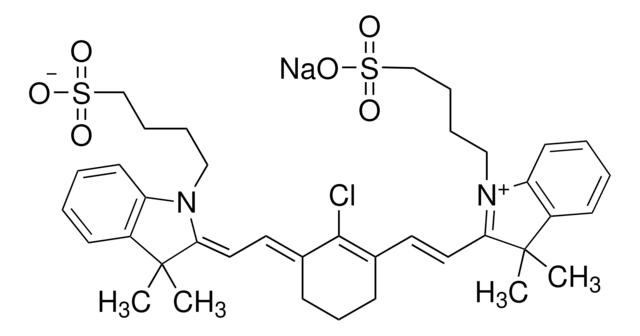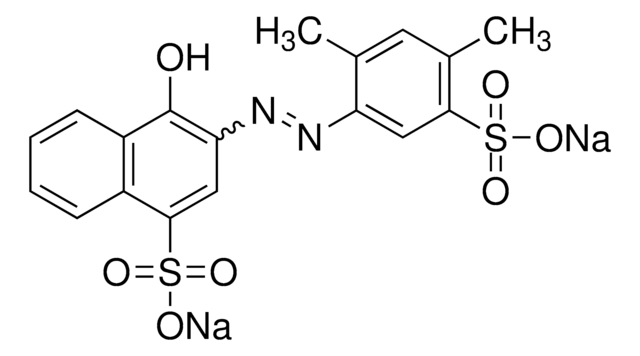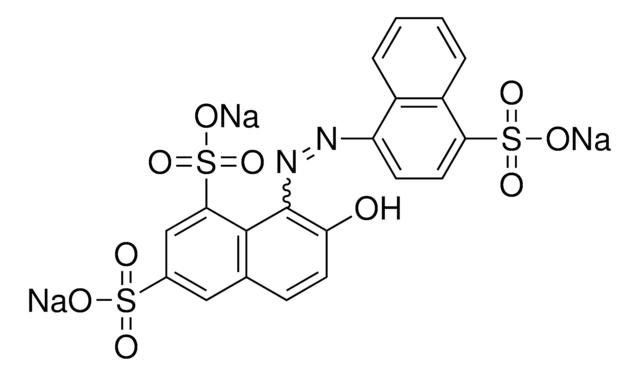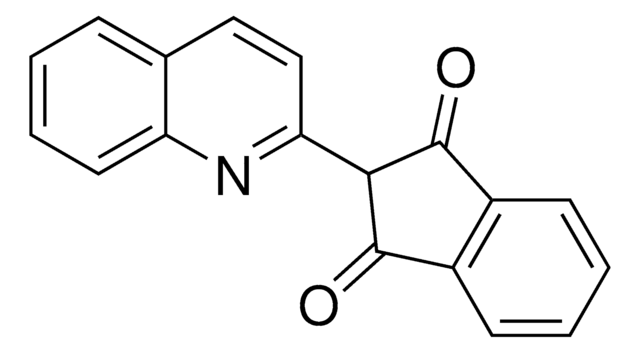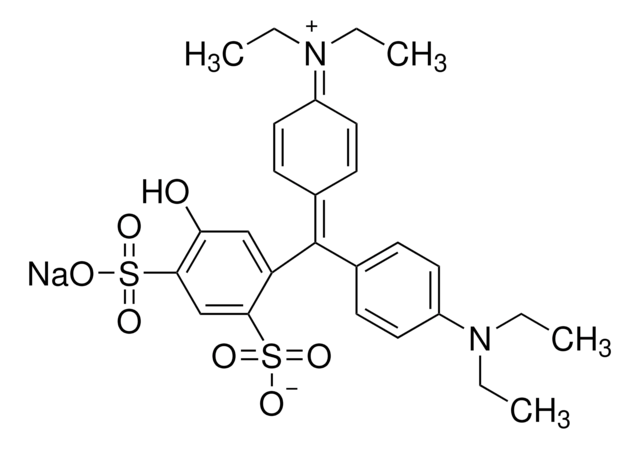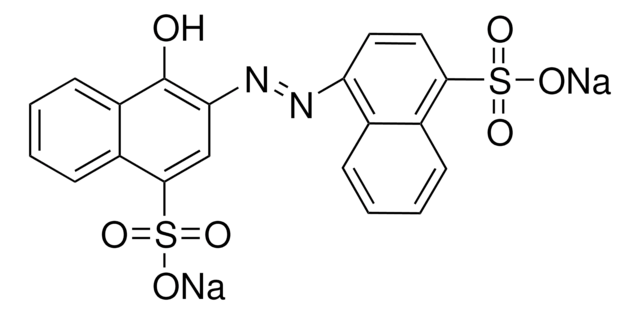Kluczowe dokumenty
T0388
Tartrazine
Dye content ≥85 %, Powder
Synonim(y):
Acid Yellow 23
About This Item
Polecane produkty
Nazwa produktu
Tartrazine, Dye content ≥85 %
Formularz
powder
skład
Dye content, ≥85%
metody
titration: suitable
kolor
orange
rozpuszczalność
H2O: 10 mg/mL, clear, yellow to orange
gęstość
2.12 at 20 °C
εmax
435-500 at 425-429 nm in water
Zastosowanie
diagnostic assay manufacturing
hematology
histology
temp. przechowywania
room temp
ciąg SMILES
[Na+].[Na+].[Na+].[O-]C(=O)C1=NN(c2ccc(cc2)S([O-])(=O)=O)C(=O)C1N=Nc3ccc(cc3)S([O-])(=O)=O
InChI
1S/C16H12N4O9S2.3Na/c21-15-13(18-17-9-1-5-11(6-2-9)30(24,25)26)14(16(22)23)19-20(15)10-3-7-12(8-4-10)31(27,28)29;;;/h1-8,13H,(H,22,23)(H,24,25,26)(H,27,28,29);;;/q;3*+1/p-3
Klucz InChI
UJMBCXLDXJUMFB-UHFFFAOYSA-K
Szukasz podobnych produktów? Odwiedź Przewodnik dotyczący porównywania produktów
Powiązane kategorie
Opis ogólny
Zastosowanie
The application of Tartrazine is seen in the phloxine-tartrazine procedure for cellular inclusions such as viral aggregates and eosinophil granules. It may be used as a substitute for orange G in a variant of Mallory′s trichrome, and in a methyl violet-tartrazine mixture to stain cryptosporidia in faecal smears and mucosal scrapings.
Kod klasy składowania
11 - Combustible Solids
Klasa zagrożenia wodnego (WGK)
WGK 1
Środki ochrony indywidualnej
dust mask type N95 (US), Eyeshields, Faceshields, Gloves
Wybierz jedną z najnowszych wersji:
Masz już ten produkt?
Dokumenty związane z niedawno zakupionymi produktami zostały zamieszczone w Bibliotece dokumentów.
Klienci oglądali również te produkty
Protokoły
Separation of Tartrazine; Amaranth; Indigo carmine; New Coccine; Sunset Yellow FCF; Allura Red AC; Fast Green FCF; Erioglaucine disodium salt; Erythrosin B sodium salt; Phloxine B; Rose bengal
Nasz zespół naukowców ma doświadczenie we wszystkich obszarach badań, w tym w naukach przyrodniczych, materiałoznawstwie, syntezie chemicznej, chromatografii, analityce i wielu innych dziedzinach.
Skontaktuj się z zespołem ds. pomocy technicznej